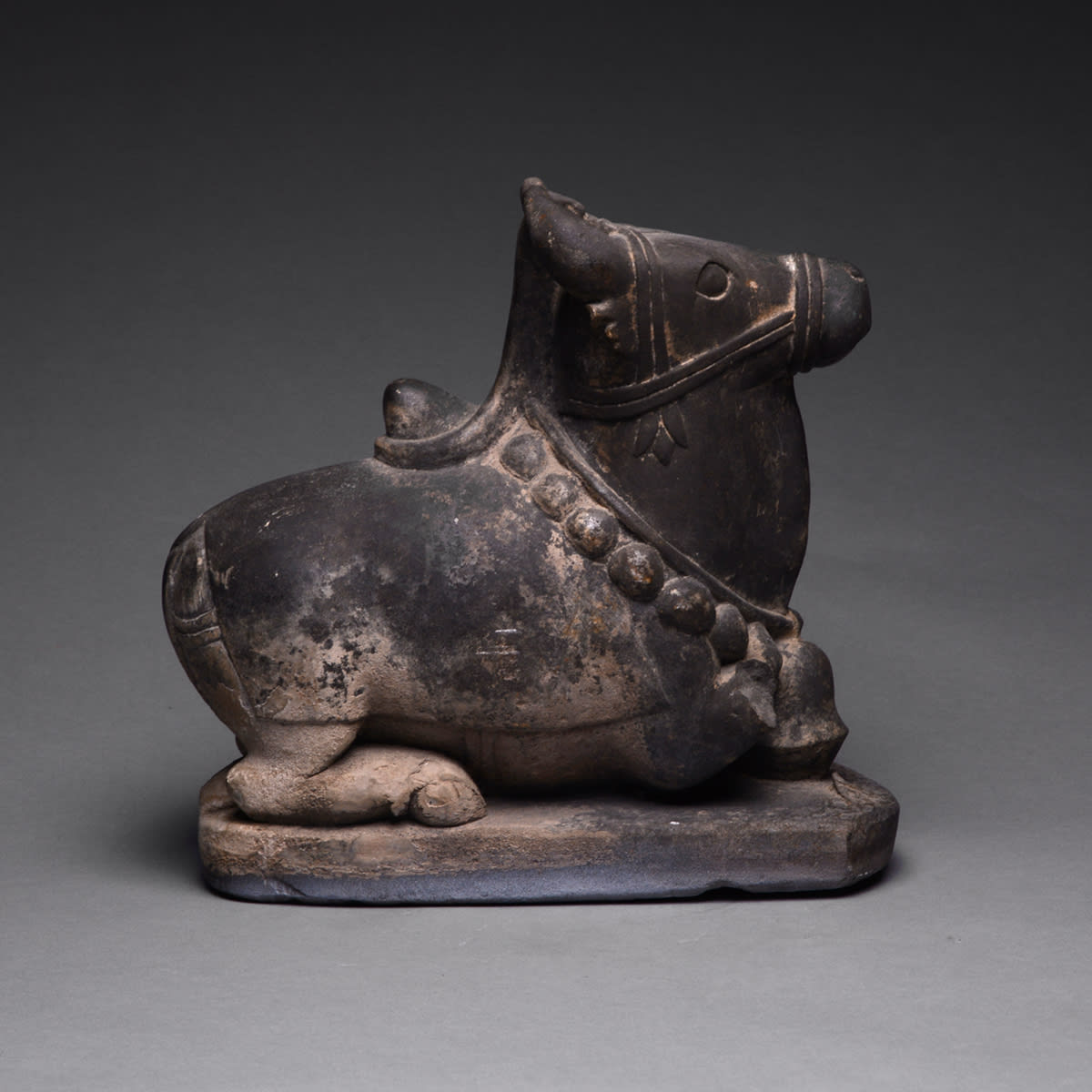Indian Sculpture of the Bull Nandi, 12th Century CE - 13th Century CE
Stone
height 4.1 cm
height 1 5/8 in
height 1 5/8 in
PF.1399
Further images
Since the very dawn of civilization, the bull has held an important place in the rituals of men. Sacred bull images have been found in the palaces and temples of...
Since the very dawn of civilization, the bull has held an important place in the rituals of men. Sacred bull images have been found in the palaces and temples of Crete, Turkey and Persia. The Egyptians worshiped the Apis bull and the animal figured prominently in the cult of the god Mithra. In Hindu belief, the bull Nandi is the sacred vehicle of Shiva, and is sometimes considered the incarnation of the god in his fertility aspects.
This splendid statue depicts a magnificent kneeling bull adorned with necklaces and a bell. We would never mistake this for an ordinary animal. Something in his dignified and regal air makes his divine status immediately apparent.
This can be traced back to the Indus Valley Civilization, where dairy farming was the most important occupation, thus explaining the appearance of various artefacts indicating a deity much like Shiva.
The close association of Shiva and Nandi explains the presence of a statue of Nandi at the gate of the Garbha Griha (sanctum sanctorum) of every Mandir (Hindu temple) dedicated to Shiva. It also explains why the word "nandi" in the Tamil language is used as a metaphor for a person blocking the way. In Sanskrit, a bull is called "vrisha", which has another connotation - that of righteousness or Dharma. It is important to seek the blessings of Nandi before proceeding to worship Lord Shiva.
This splendid statue depicts a magnificent kneeling bull adorned with necklaces and a bell. We would never mistake this for an ordinary animal. Something in his dignified and regal air makes his divine status immediately apparent.
This can be traced back to the Indus Valley Civilization, where dairy farming was the most important occupation, thus explaining the appearance of various artefacts indicating a deity much like Shiva.
The close association of Shiva and Nandi explains the presence of a statue of Nandi at the gate of the Garbha Griha (sanctum sanctorum) of every Mandir (Hindu temple) dedicated to Shiva. It also explains why the word "nandi" in the Tamil language is used as a metaphor for a person blocking the way. In Sanskrit, a bull is called "vrisha", which has another connotation - that of righteousness or Dharma. It is important to seek the blessings of Nandi before proceeding to worship Lord Shiva.
Literature
V6







